
Renting a car in California? As a long-time California resident and driver, I’m here to liven up the experience, give you all the tips and tricks, and save you some money in the process!
Before we get started – first and foremost – you need to know the renter must be at least 21 years old to rent a car in California.
As a bronzed, flip-flop-clad California local, I can tell you I’ve rented countless cars in this golden state, and I’m here to give you the 4-1-1 on the best deals, what to expect, and tips & tricks to streamline the booking process.
One thing that will immediately better your car renting process is booking in advance. Have you ever arrived at your vacation destination ready to hit the ground running, but there were no cars available to rent? It’s miserable. Please, don’t do that to yourself! ⛔
To make things easy for you when you rent a car, I’ve researched and included important information below to help you rent a car in California at all the major car rental companies.
| Age | 21 – 25 (depending on the company) |
| Documents needed | Passport, driving license (domestic or international) |
| Driving license requirements | in English or International Driving Permit |
| Speed limit | 65 mph (105 kph) on highways, 25 mph (40 kph) in cities, and 55 mph (86 kph) in rural areas |
| Which side of the road | Right |
| Children rules | Children under 2 years old must be secured in a rear-facing child safety seat unless they weigh 40 or more pounds (18 kg) or are 40 or more inches (102 cm) tall. |
| Alcohol allowed | BAC less than 0.08% |
| Metric or imperial system | Imperial (speed in mph, fuel in gallons) |
| Toll roads | Electronic and cashless; ensure the rental car has an e-tag or create an e-toll account yourself |
| Where to book | Rentalcars or DiscoverCars |
1. Car prices & choosing the best car type for you
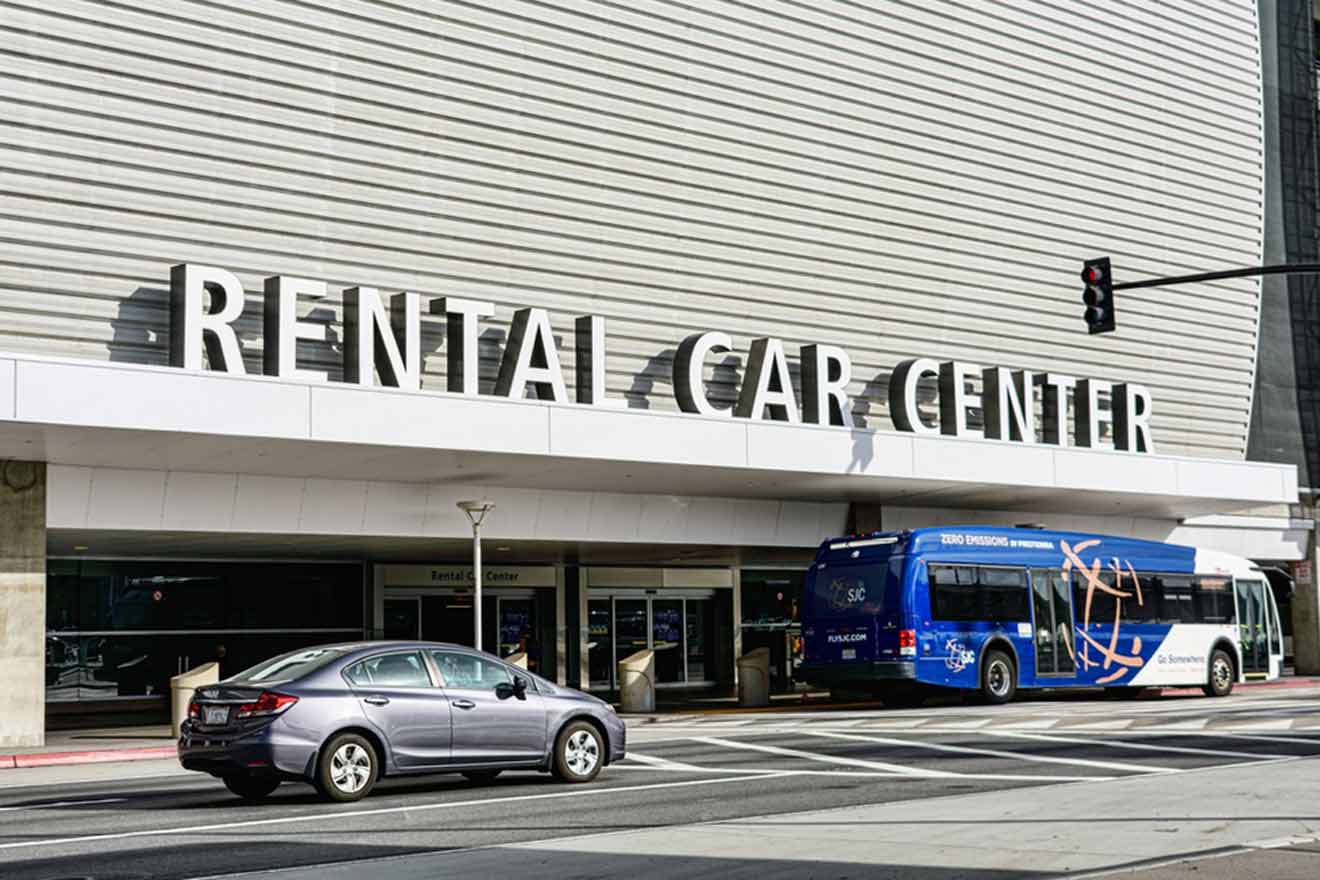
When I’m renting a car, I’m looking for the best deal! I’m sure you’re no different, so let’s review your options and the best ways to save:
1.1 Prices by season
As you might imagine, rental prices fluctuate greatly throughout the year, depending on the season.
During peak tourist seasons like summertime and major holidays, you’ll find that rental prices tend to soar. 🤑
When you visit San Diego County, for example, rental car prices can quadruple during the holiday season!
If you’re renting a car in California, make sure you plan accordingly for your trip to the Golden State. Car rental companies use demand as their main distinguishing factor when adjusting their prices.
1.2 Prices by car model
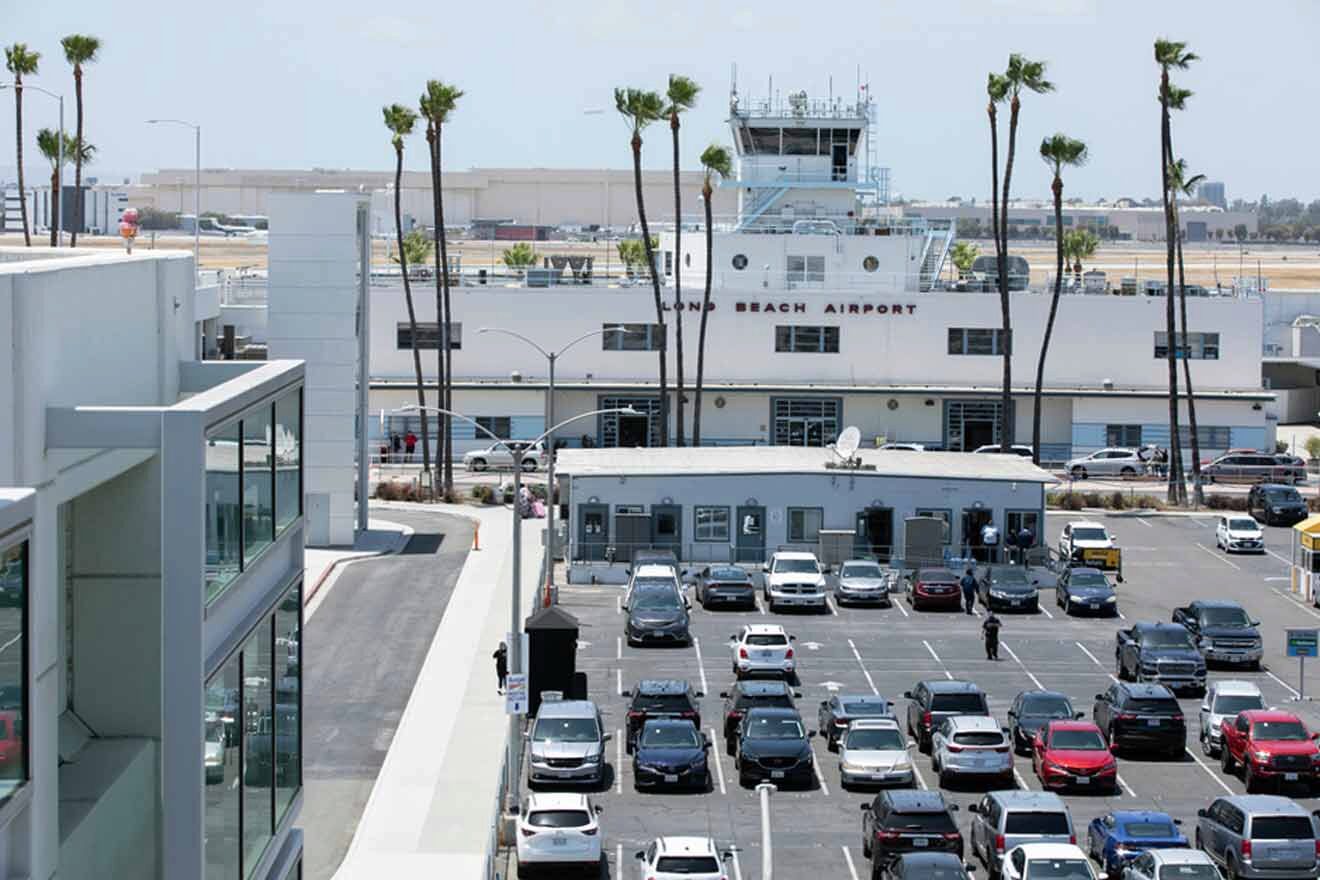
You’re going to catch on to this theme throughout the article, but I want to really drive the point home – booking early saves you money when you rent a car in California!
Your choice of vehicle will also seriously affect your budget. As you might imagine, when it comes to your rental car, smaller, compact cars are cheaper than larger, luxurious vehicles at most of the car rental companies.
Deciding ahead of time on your visit and booking early will help you save tons of money to use towards the rest of your trip.
1.3 How to choose the type of car that is perfect for you
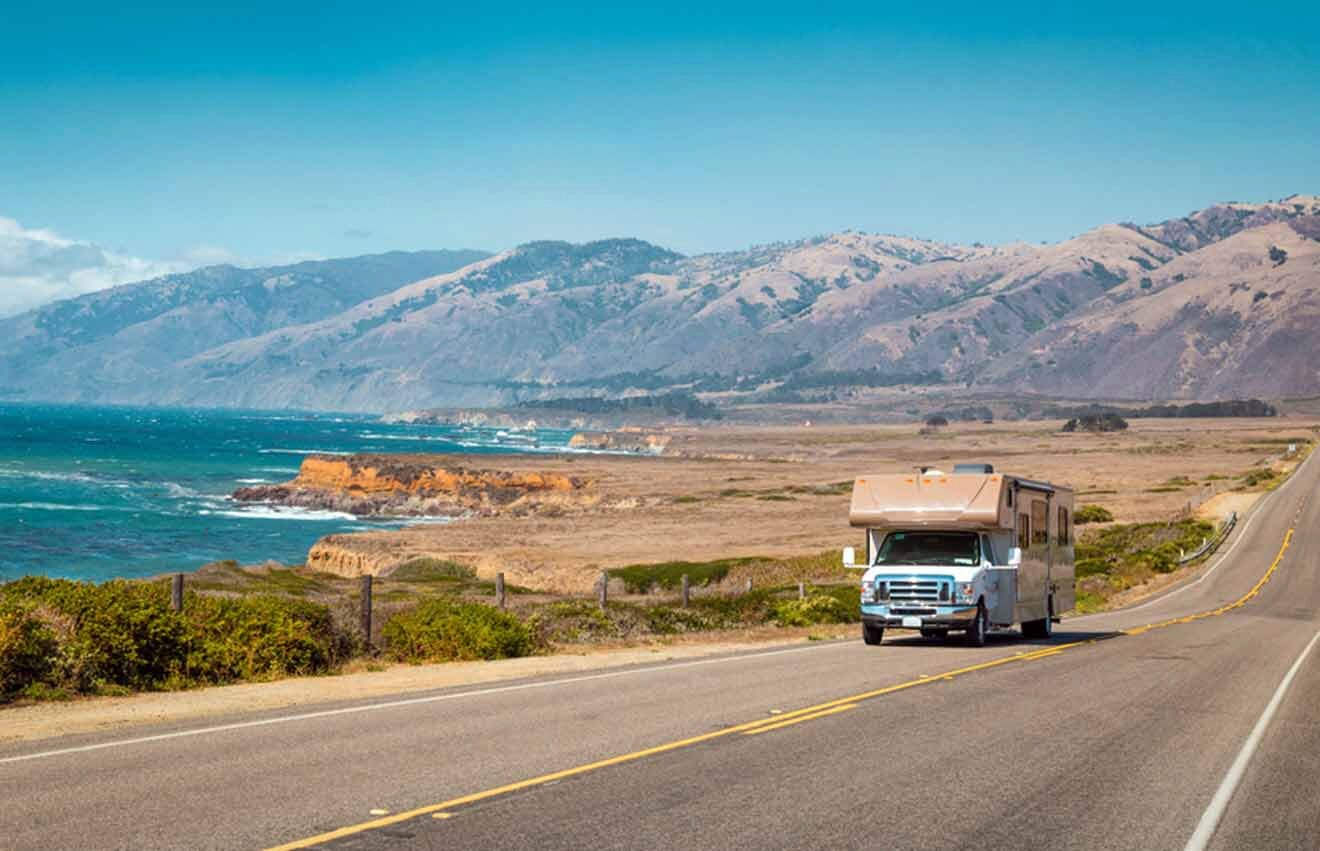
- Economy/Compact Cars – smaller, fuel-efficient cars are the perfect choice for solo travelers or couples wanting to save money.
- Midsize/Sedan Cars – if you need more space and comfort, mid-size cars are a great choice for small families or groups.
- SUVs/4WDs – planning an off-road adventure? Opting for a SUV or 4WD is the way to go.
- Campervans – popular with families and those looking to camp out on their visit, campervans are the perfect choice.
- Electric car – popular with environmentally conscious travelers, car rental companies offer electric cars, and there are many charging stations around the country. Here is the map to help you plan for your “fuel-up”.

PRO TIP: I cannot stress this enough: inspect your car rentals for any pre-existing damage, no matter how minor, and ensure it’s documented on the rental agreement.
HACK: when you rent a car, use your own mobile phone to take photographs of the vehicle when you pick it up, and when you drop it off. You’ll have time and date stamped proof should the company decide to charge your credit card after the fact.
NOTE: review your rental agreement. For major cities where traffic is crazy, I highly recommend insurance coverage. If your own personal insurance from your home country covers your car rental in California, I still would be safe and go for additional coverage. Oh, and check to make sure there is free cancellation.
MY ADVICE: First off, if this is a major California road trip and you need ideas of where to lay your head, check out our article on where to stay in California.
A great way to suss out the kind of experience you are going to have renting a car, research customer reviews of rental agencies before booking. Before your visit, make sure to pre-book to secure better rental deals – don’t snooze on rental car savings.
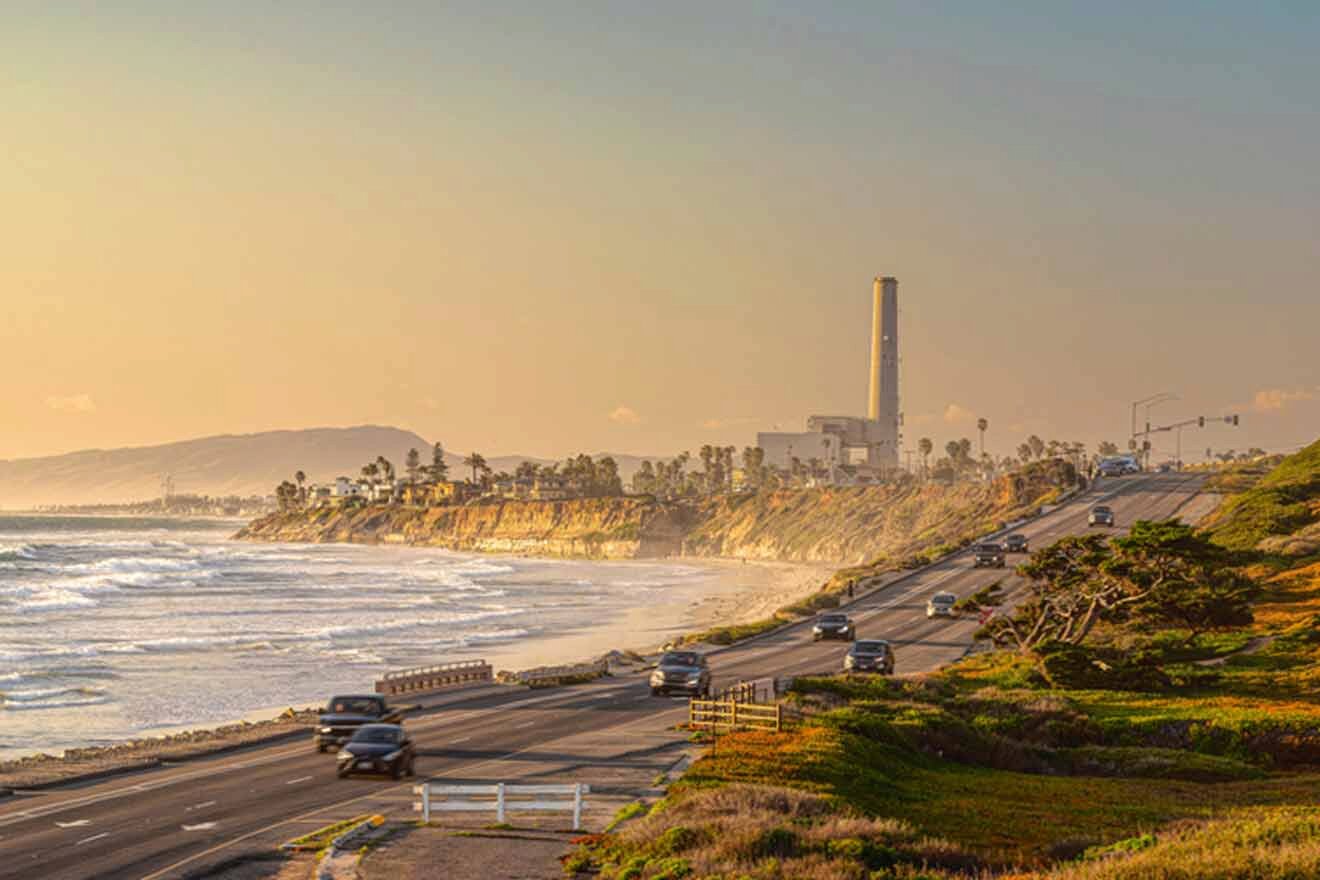
I’d opt for a GPS to discover hidden gems, and double-check for rental insurance options to make sure your trip goes smoothly.
I’m a beach girl and I love the Pacific Ocean, so I say choose a convertible car rental for the coastal breeze and navigate the scenic Pacific Coast Highway in style! See our guide for suggested stops on the way.
Best way to save on your rental car in the end, make sure to return the car rental with a full tank if required.
I highly suggest you consider eco-friendly car rental options – not only environmentally friendly but also kind to your wallet.
Don’t worry about everyone else’s itinerary, explore California’s diverse landscapes at your own pace.
Oh, and this is a biggie: depending on who you decide to book with, ensure international licenses are accepted!
1.4 Tips on how to save on your rental car

I know you came here for the insider tips on how to save big, so let me list them below:
- Book your rental car in advance, you’ll get lower rates by reserving your rental car well ahead of your trip, especially during peak seasons.
- Compare cheap car rental competitor prices and see if you can get a company to match or beat the price.
- Arriving at one airport and leaving from another? Consider off-airport locations and explore one-way rentals for potential cost savings.
- Taking a long, road-trip? Opt for unlimited mileage for extensive trips.
- Make sure you keep emergency contacts in case of car issues.
- When booking a rental car, consider renting for longer durations for discounts.
- As we talked about, peak tourist season may increase rental car rates in California – plan accordingly.
- Don’t forget to check for discounts through your memberships, credit cards, and loyalty programs – they can help you save big on your car rental.
2. Other costs: insurance and gas
Make sure you have your expectations set for the cost of insurance and gas which can add up quickly!
California car rental agencies typically offer various insurance options.
2.1 Insurance types and prices
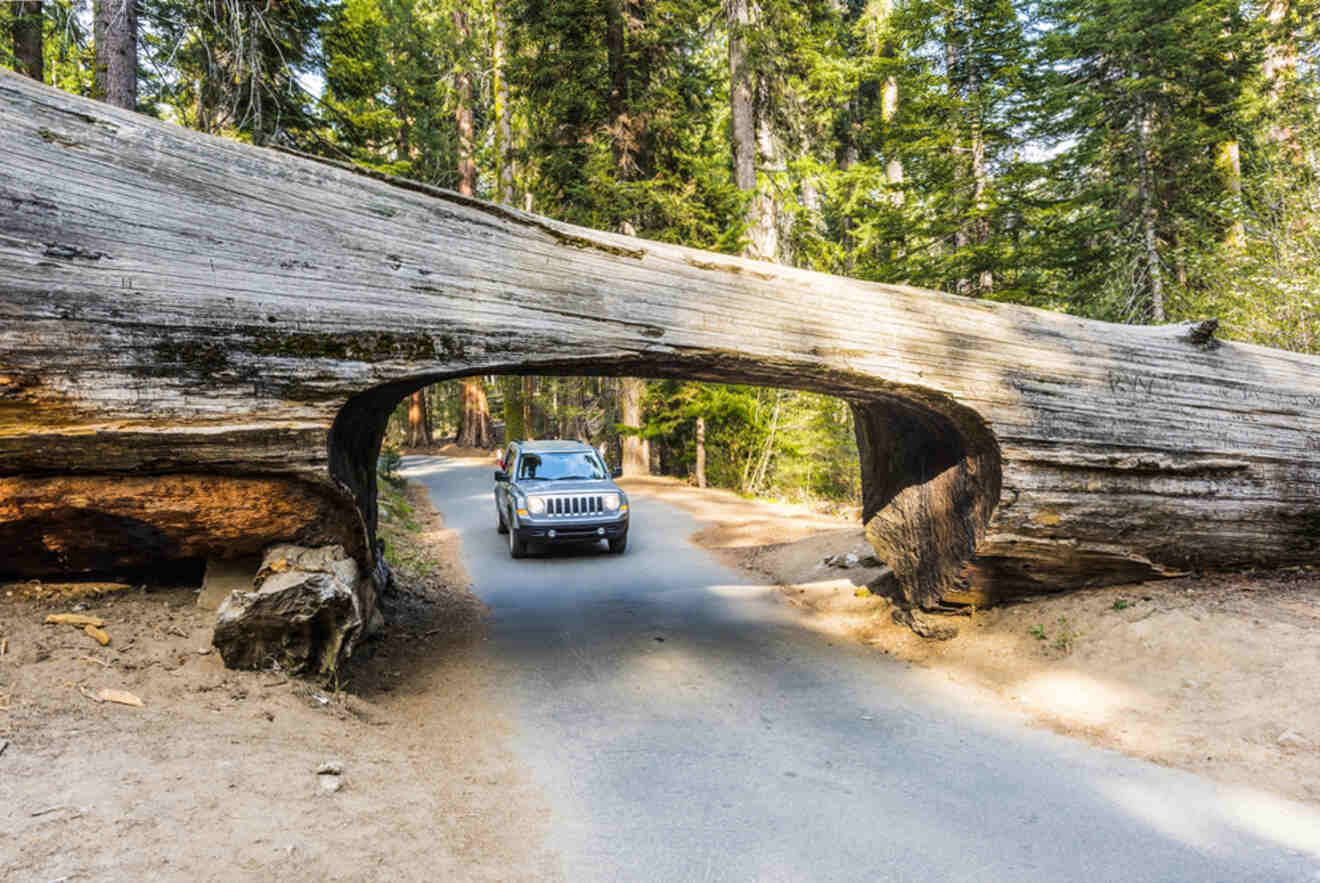
There are several different options when it comes to insurance types and prices for your car rental. See below for some of the options you might be presented with:
- Liability Insurance – mandatory in California and covers bodily injury and property damage you may cause to others in an accident where you are at fault.
- Collision Damage Waiver (CDW) or Loss Damage Waiver (LDW) – not insurance exactly but a waiver that releases you from financial responsibility if the car rental is damaged or stolen. It typically covers damage to the car rental, but not liability for injuries or damage to other people or property.
- Supplemental Liability Insurance (SLI) – provides additional liability coverage, extending beyond the state’s minimum requirements. It covers injuries and property damage you may cause to others in an accident while driving the rental car.
- Personal Accident Insurance (PAI) – covers medical expenses for you and your passengers if you’re injured in an accident while driving the rental car.
- It may also provide coverage for accidental death benefits.
- Personal Effects Coverage (PEC) – offers protection for your personal belongings if they are stolen from the rental car.
- Roadside Assistance – your homeowner policy may already cover this, so double-check.
- Underinsured/Uninsured Motorist Coverage (UM/UIM) – UM/UIM coverage protects you if you’re involved in an accident with a driver who has little or no insurance. It will cover medical expenses and, in some cases, vehicle damage.
2.2 Fuel/gas prices
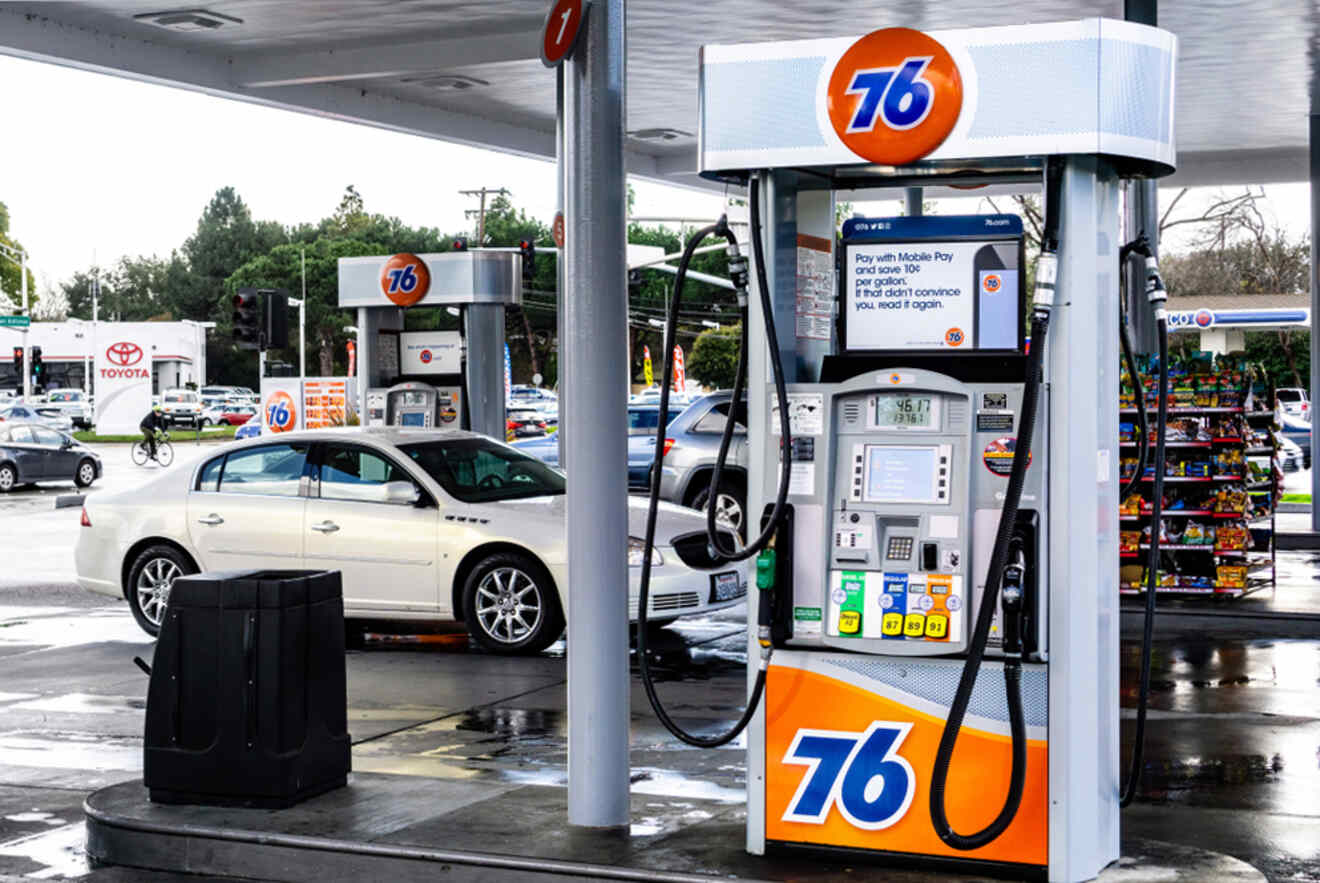
I’m sorry to say that fuel prices in California are pretty expensive, but if you plan ahead and plan accordingly, it shouldn’t be much of an issue with your car rentals.
One of my favorite life hacks, use apps to find the cheapest gas stations to use for your car rental. It makes it easy to research fuel costs along your route.
While there are many apps designed to check for local fuel prices, I use good, ol’ trusty Google Maps to scan the cheapest gas in the area.
While cars rented in California often come with unlimited mileage, keep in mind it is mandatory in California to return the rental car with the same fuel level as when rented.
Our 2 main fuel types in California are below:
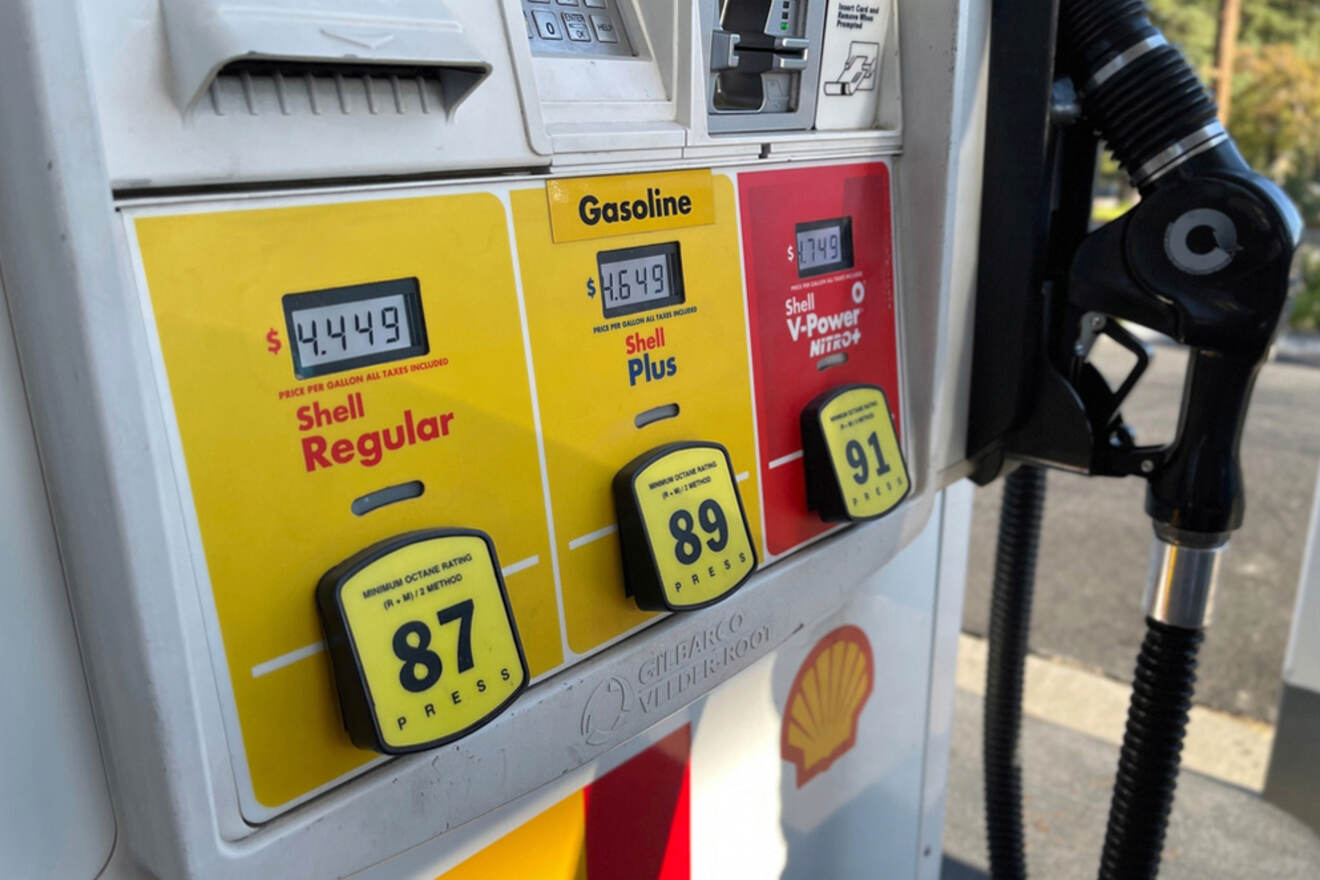
Regular (87 Octane) Gasoline
In major cities, such as Los Angeles, San Francisco, and San Diego, you can expect to pay anywhere from US$4.50 to US$5.50 per gallon or even higher during peak travel seasons or when oil prices spike.
In more rural or less densely populated areas, prices may be slightly lower, ranging from US$4.30 to US$5.20 per gallon.
Premium (91-93 Octane) Gasoline
Premium gas ranges from US$4.80 to US$6 or more per gallon in major cities. In rural areas, premium gas ranges from US$4.60 to US$5.80 per gallon.
PRO TIP: if you can, opt for an electric vehicle for your car rental! You’ll save tons of money in fuel prices, they are good for the environment, and they are typically small and easy to park!
3. Road tolls and fines
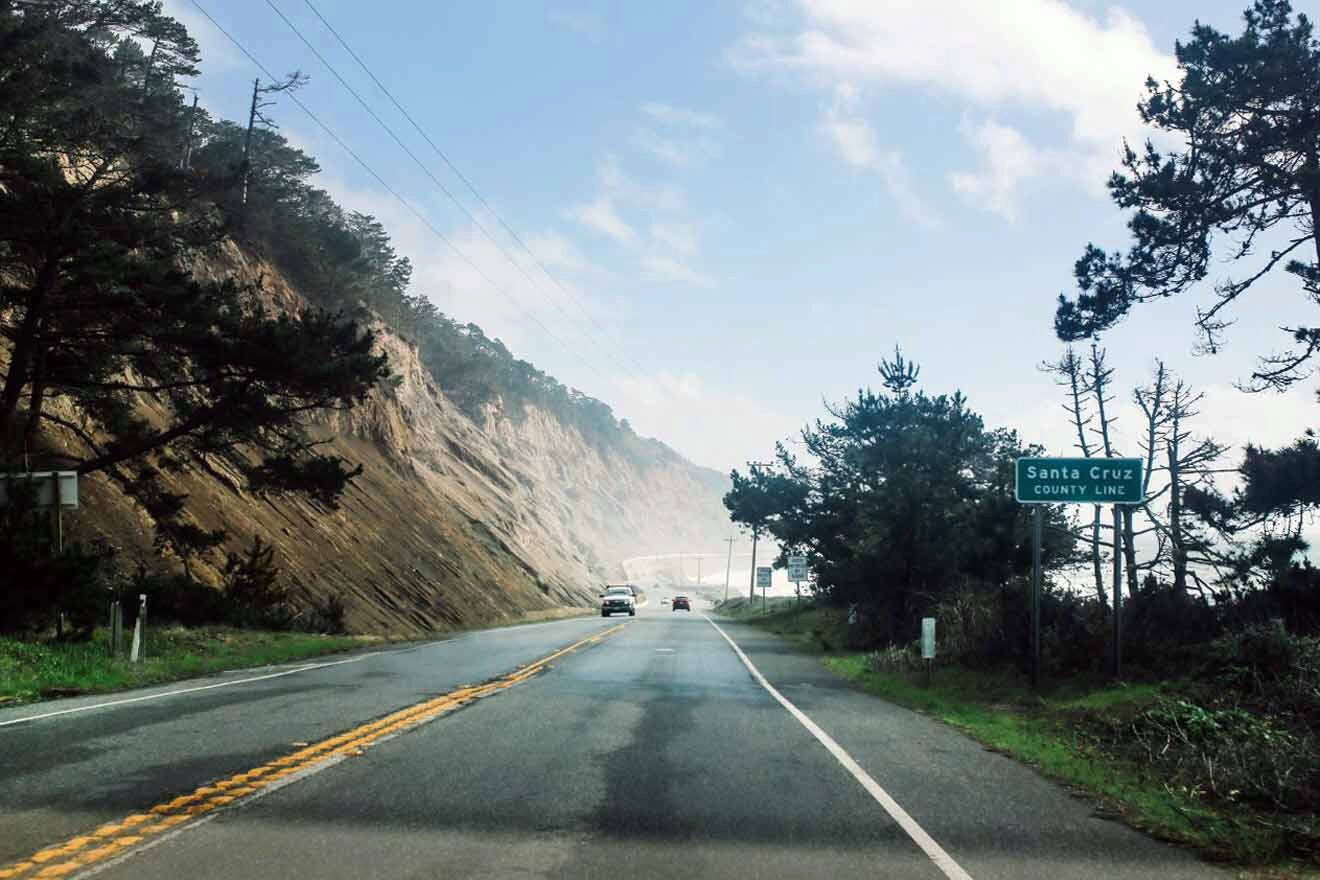
Ugh, fines!
In California, road tolls and fines can vary depending on the type of violation, location, and specific circumstances. It’s important to educate yourself and adhere to California’s driving regulations.
Toll Roads
California has several toll roads and bridges, primarily in the San Francisco Bay Area, Southern California, and Orange County. Toll charges vary by location and are typically collected through electronic tolling systems like FasTrak. Toll amounts depend on the specific toll road or bridge you use.
Traffic Violation Fines
California enforces fines for many different traffic violations, including speeding, running red lights, illegal parking, etc. The fines can vary based on the type of violation and location. So be especially careful when you cruise through the vibrant streets of Los Angeles or plan for parking in bustling San Francisco.
Parking Tickets
Parking fines in California can vary by city and even within different parts of a city. Parking tickets can range from relatively low amounts for minor violations to higher fines for more severe infractions like parking in a handicapped spot without proper authorization.
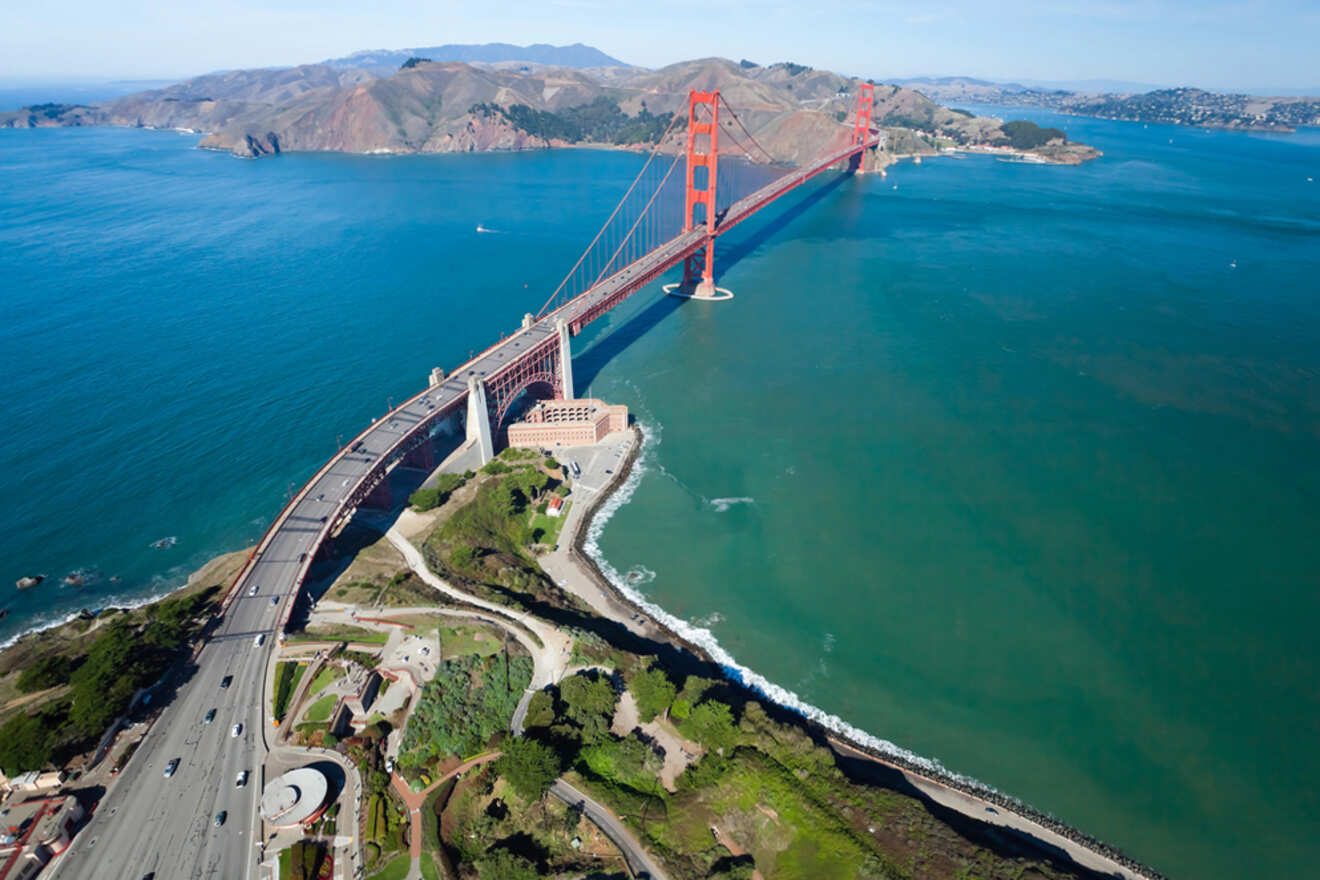
DUI and Reckless Driving
Driving under the influence (DUI) and reckless driving fines in California can be substantial. Penalties for DUI can include fines, license suspension, and even jail time, particularly for repeat offenders or cases involving accidents. So when you drive through wine country in Napa Valley, make sure you have a sober designated driver.
Traffic Camera Violations
California uses traffic cameras to enforce certain traffic violations, such as red-light running and speeding in some areas. Fines for these violations can vary depending on the specific violation and jurisdiction.
Toll Roads without FasTrak
If you use a California toll road without a FasTrak transponder and fail to pay the toll online or within the required timeframe, you may receive a violation notice with additional fees.
3.1 Road tolls in California
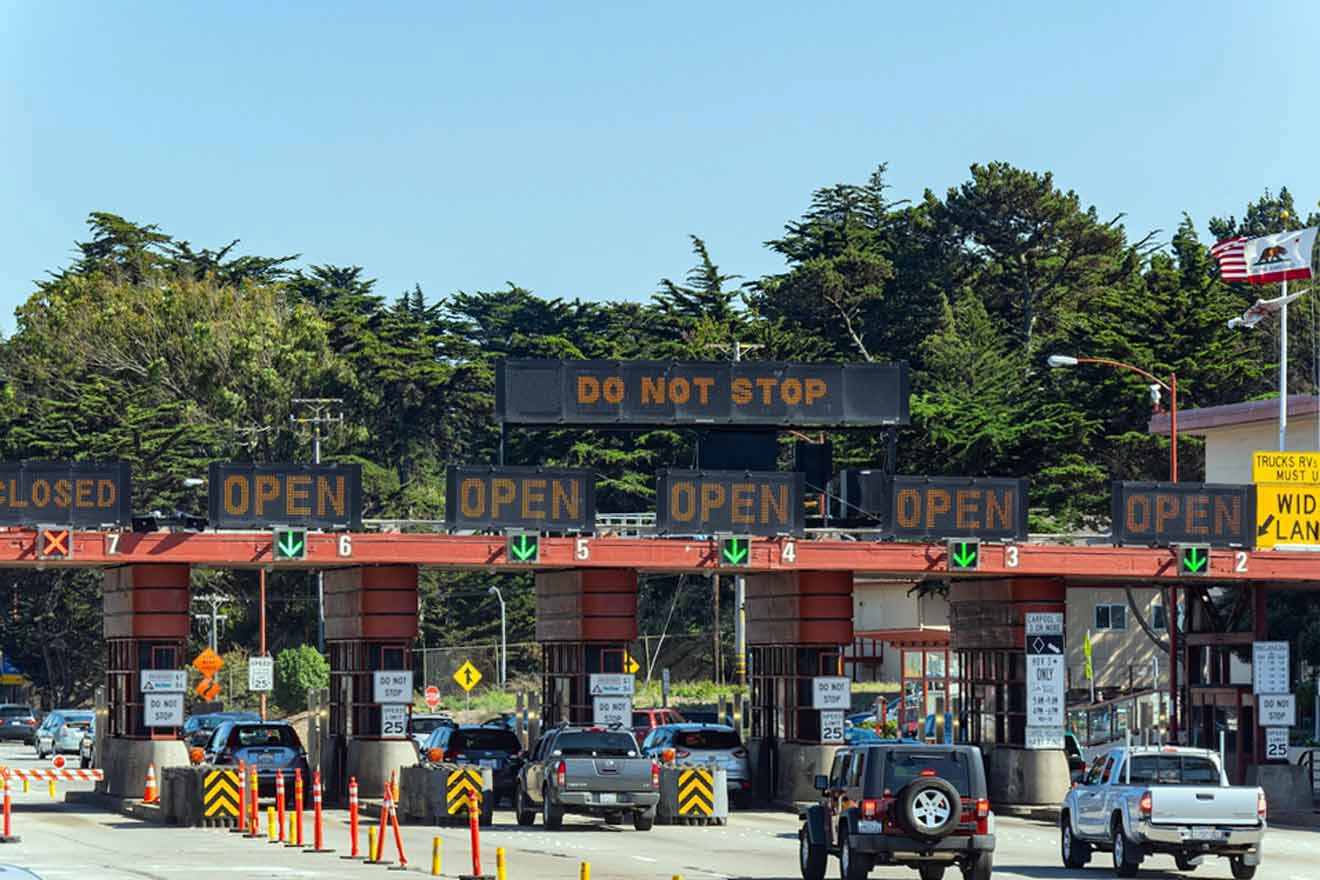
The Golden State is a big one, and each city has different fines and tolls for different areas. For instance, in San Francisco Bay Area Bridges, tolls range from US$5 to US$7 and payment is by electronic toll.
Down in San Diego, the bridge to Coronado is now toll-free, but side roads can range from US$2.50-US$4, cash or credit cards are accepted at most toll booths.
3.2 Road fines in California
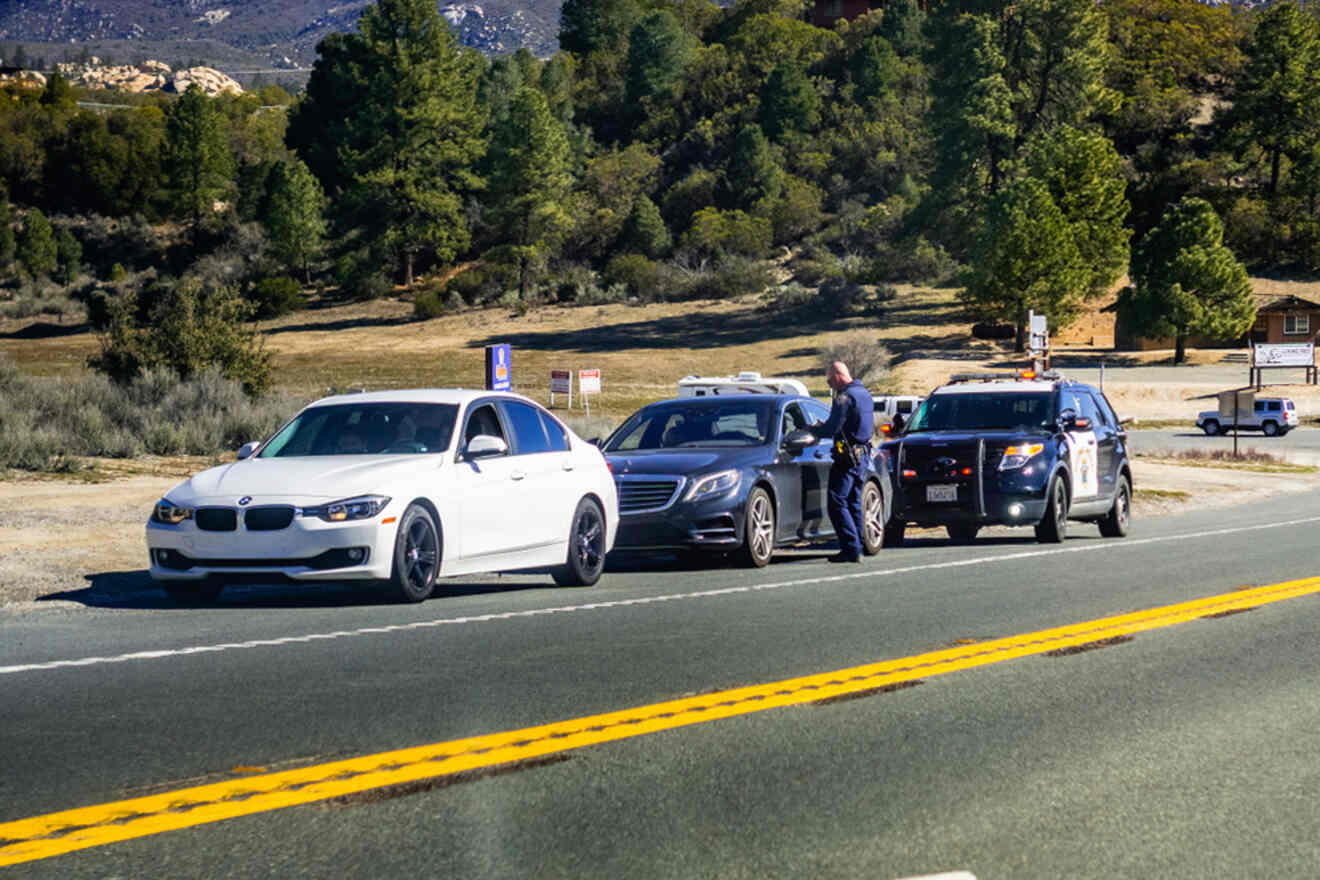
Fines stink. Try your best to avoid them when you rent a car in California.
California imposes fines for various traffic violations – speeding, running red lights, illegal parking, using a handheld device while driving, and more.
Fines can range from US$20 for minor violations to hundreds of dollars for serious infractions.
4. Road quality
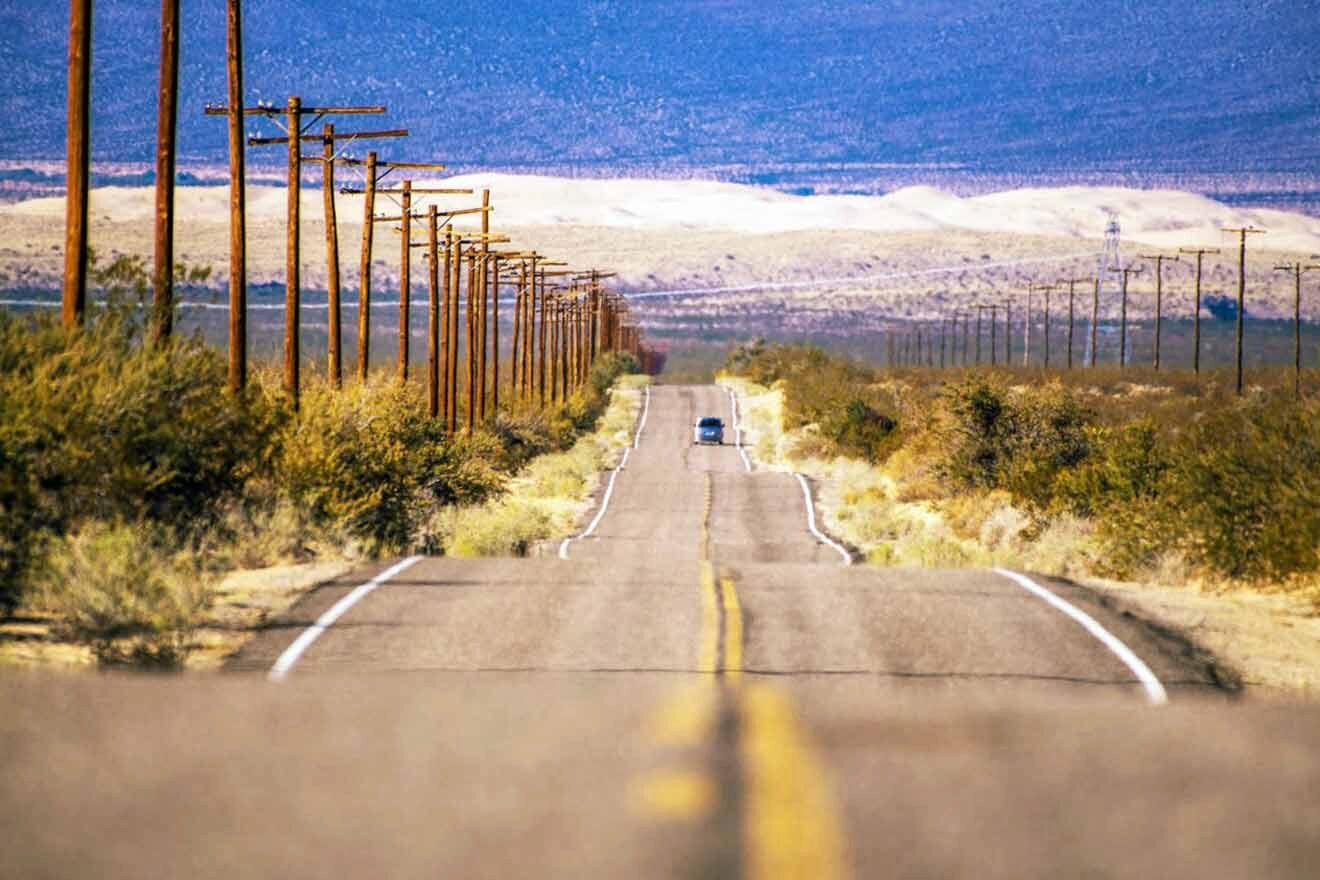
While many major highways are well-maintained and offer smooth driving experiences, some highly traveled tourist areas may have varying road conditions.
All in all, the roads are decent here and you shouldn’t have any issue in a compact car rental, so let loose and experience the freedom of road-tripping.
5. Parking rules and fees
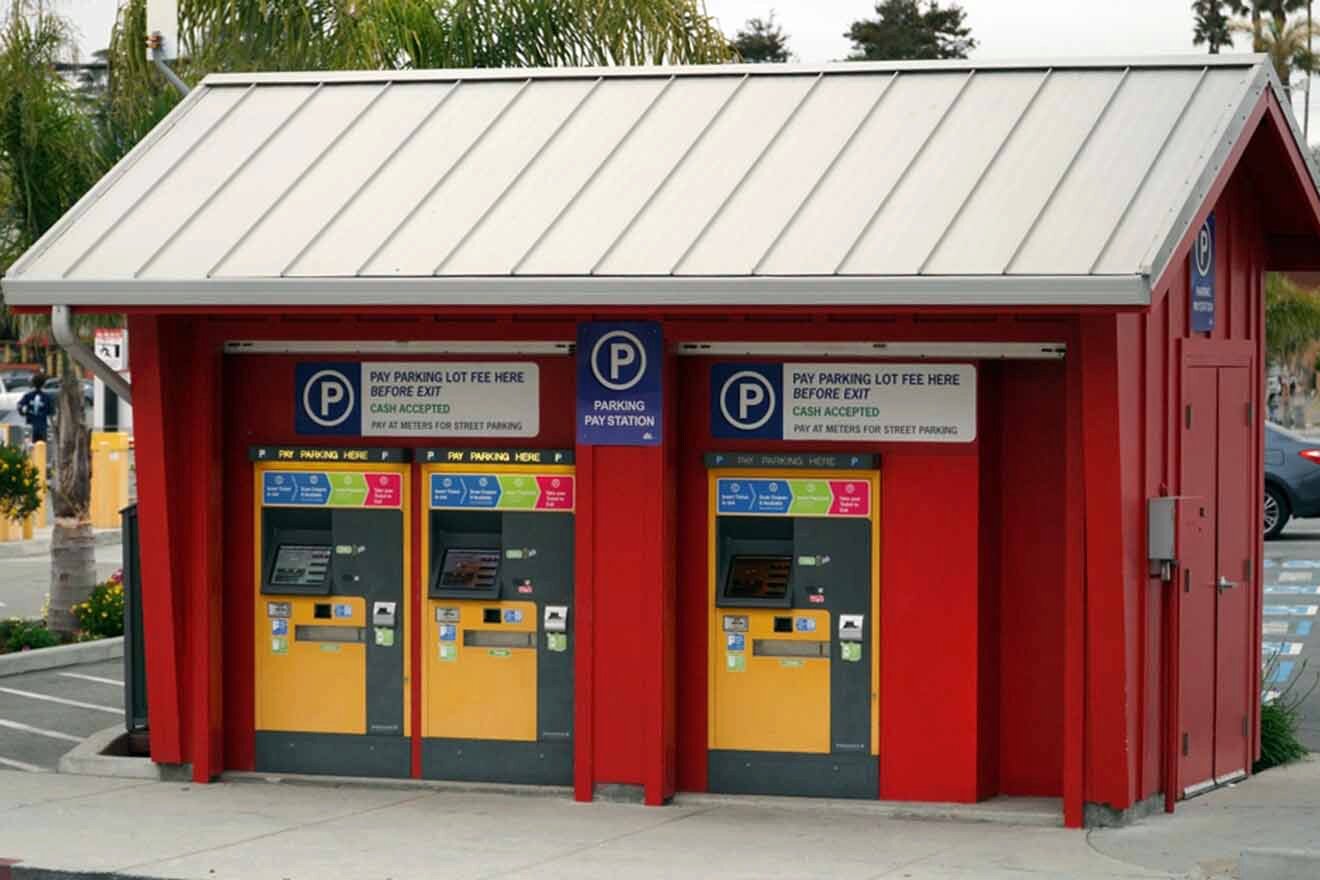
Like any major destination, parking can often be difficult in California around the bigger cities and beach towns.
Regulations will vary greatly, whether you’re in a city, a residential area, or a commercial district.
Here are some common parking rules and fees to keep in mind:
- Metered parking – in urban areas, metered parking spots are common. You’ll need to pay for parking by depositing coins or using mobile apps where available. Rates vary by city and location, with higher fees typically in busy downtown areas.
- Time limits – many street parking spots have time limits, which restrict how long you can park in one spot. These limits can vary from 15 minutes to several hours, so always check the posted signs.
- Permit parking – some residential neighborhoods and certain areas require parking permits. These permits are typically issued to residents, allowing them to park on the street without time restrictions. Non-residents may need to find alternative parking options.
- Street sweeping – pay attention to posted street sweeping schedules. Parking on streets during designated street sweeping times can result in fines and your vehicle being towed.
- Accessible parking – disabled parking spaces are available for individuals with disabilities. Using these spaces without proper authorization can result in significant fines.
- Parking garages and lots – in urban areas, you’ll find parking garages and lots with hourly or daily rates. These rates can vary widely, so it’s a good idea to check in advance or at the entrance.
- Holiday parking – some cities offer free or reduced parking on certain holidays. Check with local authorities or parking signage for holiday-specific rules.
- Payment methods – many parking facilities accept cash, credit cards, or mobile payment apps. Make sure to have the necessary payment method ready.
To avoid parking fees, familiarize yourself with California parking signs – this website is really helpful!
6. Other expenses
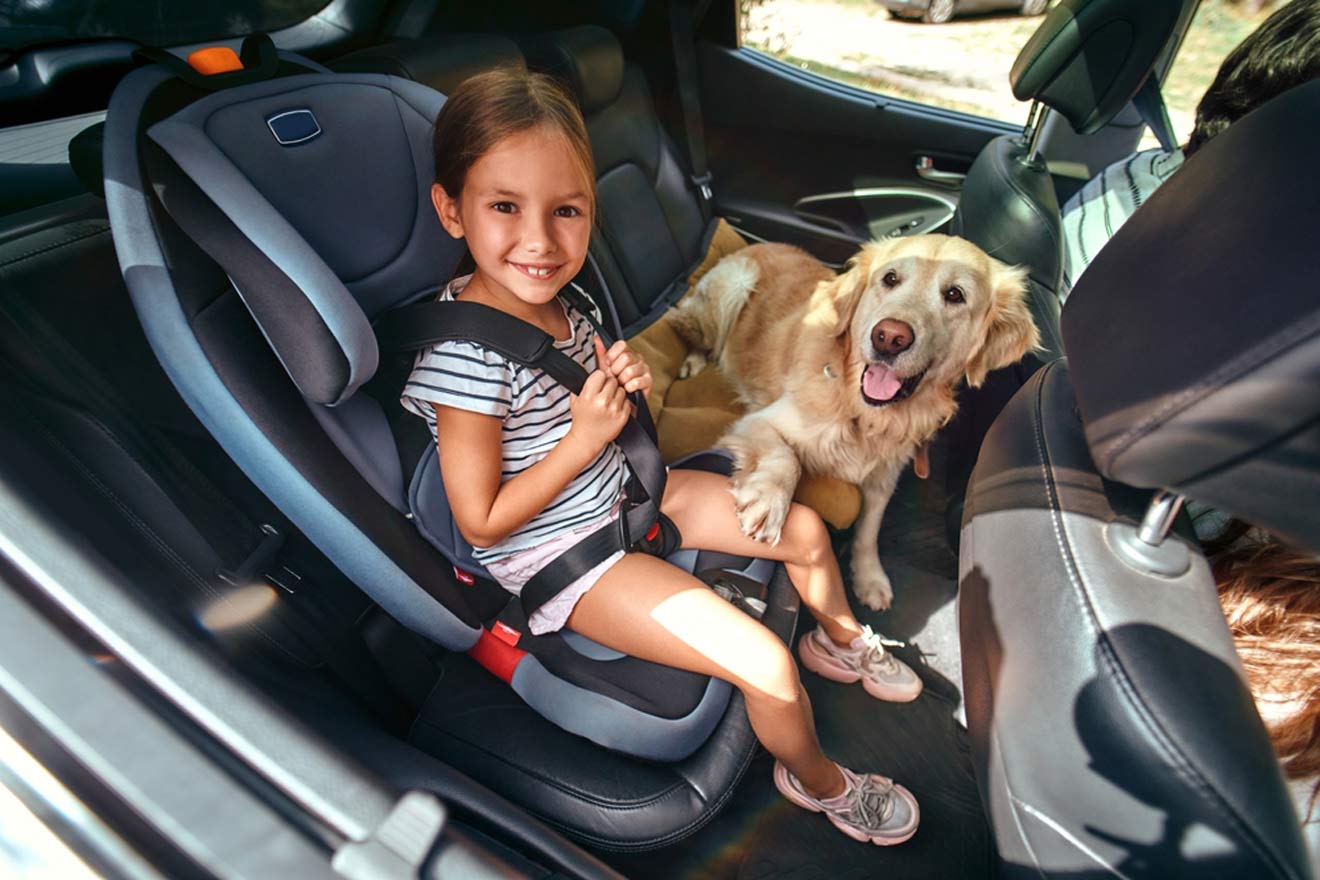
As a mom of a little kiddo, all the little extra costs sneak up quickly, so I like to set my expectations and know what I’m in for ahead of time.
For me, a child car safety seat is a must and typically runs you around US$5 a day for the rental. If you opt for GPS, figure about the same cost as the child seat.
7. Other things to know about renting a car in California
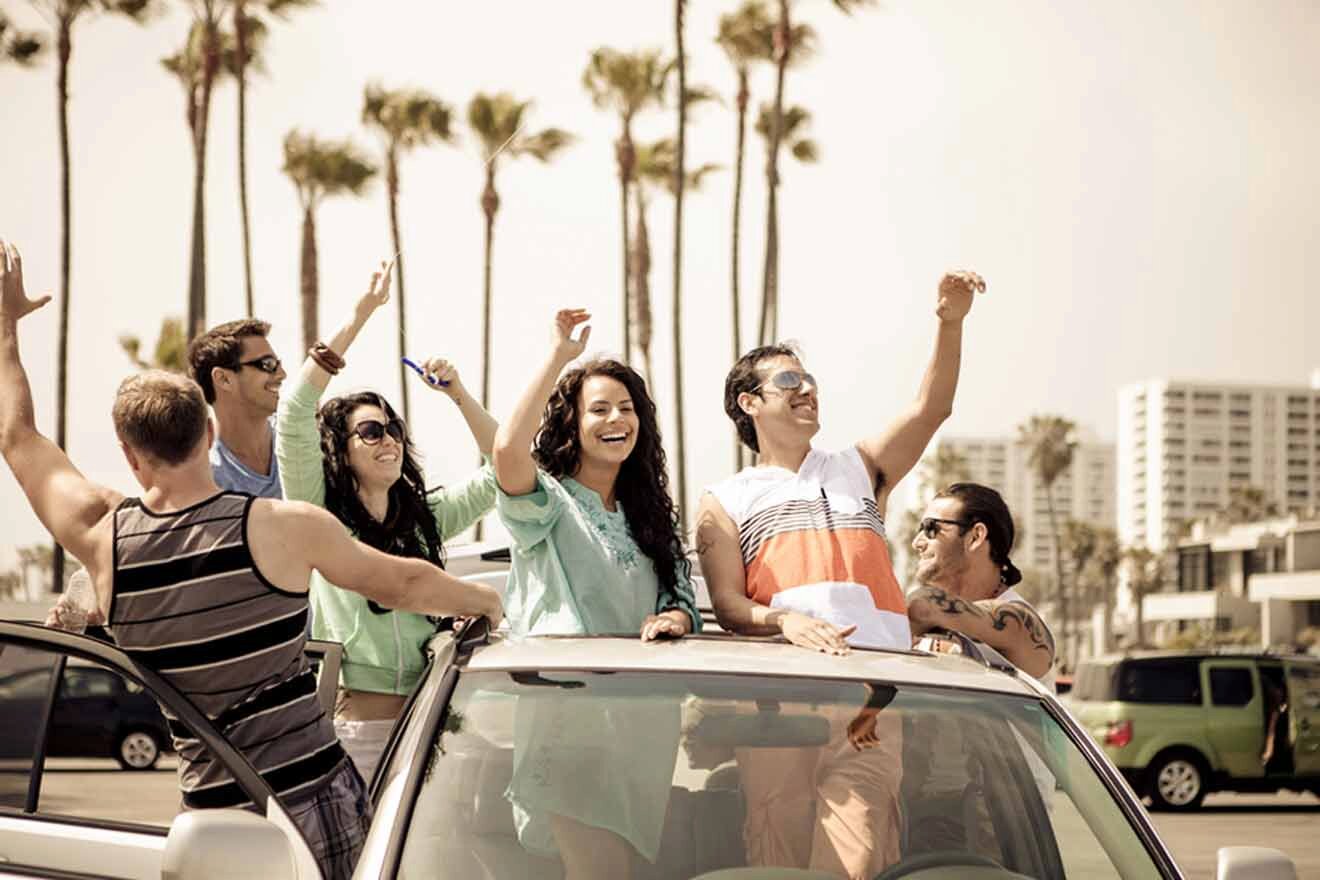
Make sure you check your rental agreement for any mileage limitations.
Review and understand the carpool (HOV) lane rules (you must be riding with an additional passenger).
Also, many of the car rental in California options are only automatic transmissions, which is common for transportation options in the US.
And finally, if you’re terrified of the idea, or just want to have other options, know many of the major cities have public transportation options, too.
- Additional drivers – if you plan to have more than one person drive the rental car, there may be fees for adding extra drivers to the rental agreement.
- Airport fees – if you pick up or drop off your rental car at an airport location, you may incur additional airport surcharges and fees.
- Late return fees – renting a car in California and then returning the car late can result in fees. Be sure to adhere to the agreed-upon return time to avoid extra charges.
- Cleaning fees – if you return the car rental excessively dirty or with strong odors, the rental company may charge cleaning fees.
- Refueling charges – if you return the car without refilling the fuel tank to the level specified in the rental agreement, you’ll be charged a refueling fee, often at an inflated fuel price.
- International border crossings – if you plan to drive the rental car across international borders (e.g., to Mexico or Canada), be aware of any additional fees or insurance requirements.
8. Safety precautions
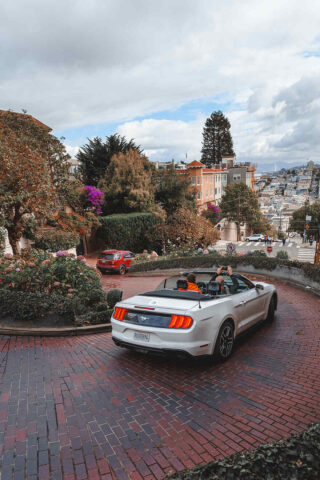
As a local Californian who lives right on the border of Mexico, my advice would be do not drive yourself into Mexico, especially with a rental car. Opt for a tour, or a ride share, or save it for another trip. The political climate in Mexico is questionable and violence is high.
- Understand the vehicle – familiarize yourself with the vehicle’s controls, including headlights, windshield wipers, turn signals, and emergency flashers. Adjust mirrors and seats for comfort and visibility.
- Buckle up – ensure that everyone in the vehicle is wearing their seatbelt at all times. California law requires all passengers to wear seatbelts, regardless of their age or seating position in the car.
- Obey traffic laws – adhere to all California traffic laws, including speed limits, stop signs, and red lights. Avoid distracted driving by not using your phone while driving unless you have a hands-free system.
- Stay informed – check the local weather forecast and road conditions before setting out on your journey. Be prepared for adverse weather, especially if you plan to travel through mountainous regions.
- Avoid night driving – if possible, avoid driving at night when you rent a car, especially in unfamiliar areas. Reduced visibility and increased fatigue can make night driving riskier.
- Emergency kit – carry an emergency kit in the car, including items like a first-aid kit, flashlight, blankets, water, non-perishable snacks, and basic tools.
- Secure valuables – don’t leave valuable items in plain sight inside the vehicle. Use the trunk or lock items in the glove compartment.
- Emergency contact – have a list of emergency contacts, including the rental company’s contact information, in case you encounter any issues with the vehicle.
9. Useful apps
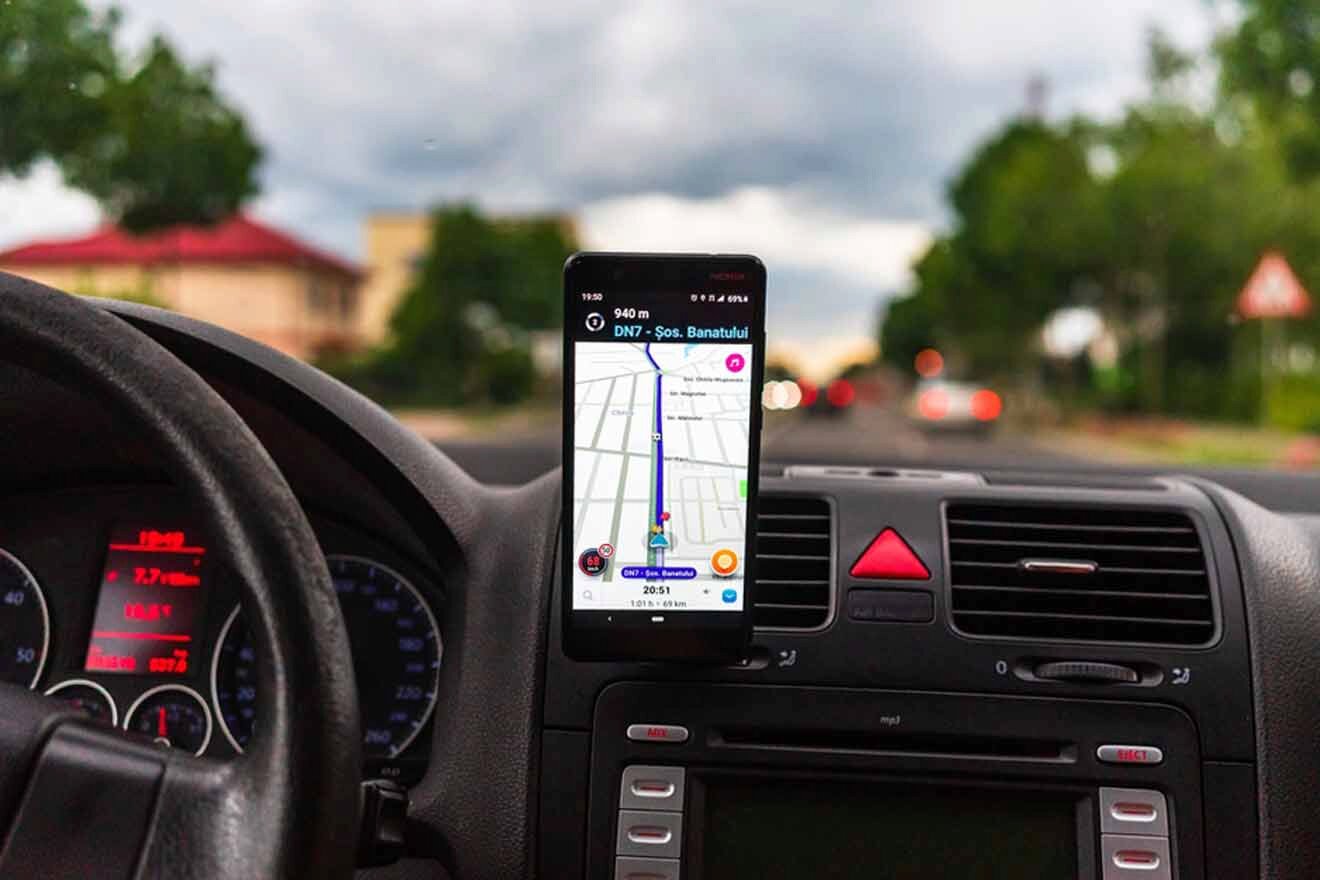
Google Maps
My all-time favorite travel partner is GMaps, it’s almost always accurate and so simple to use.
(Android | Apple)
Waze
Also popular for real-time info on traffic, road conditions, and police presence. The speed limit feature can help you know the current speed limit and if you are exceeding it.
(Android | Apple)
10. Tips for when you receive the rented car
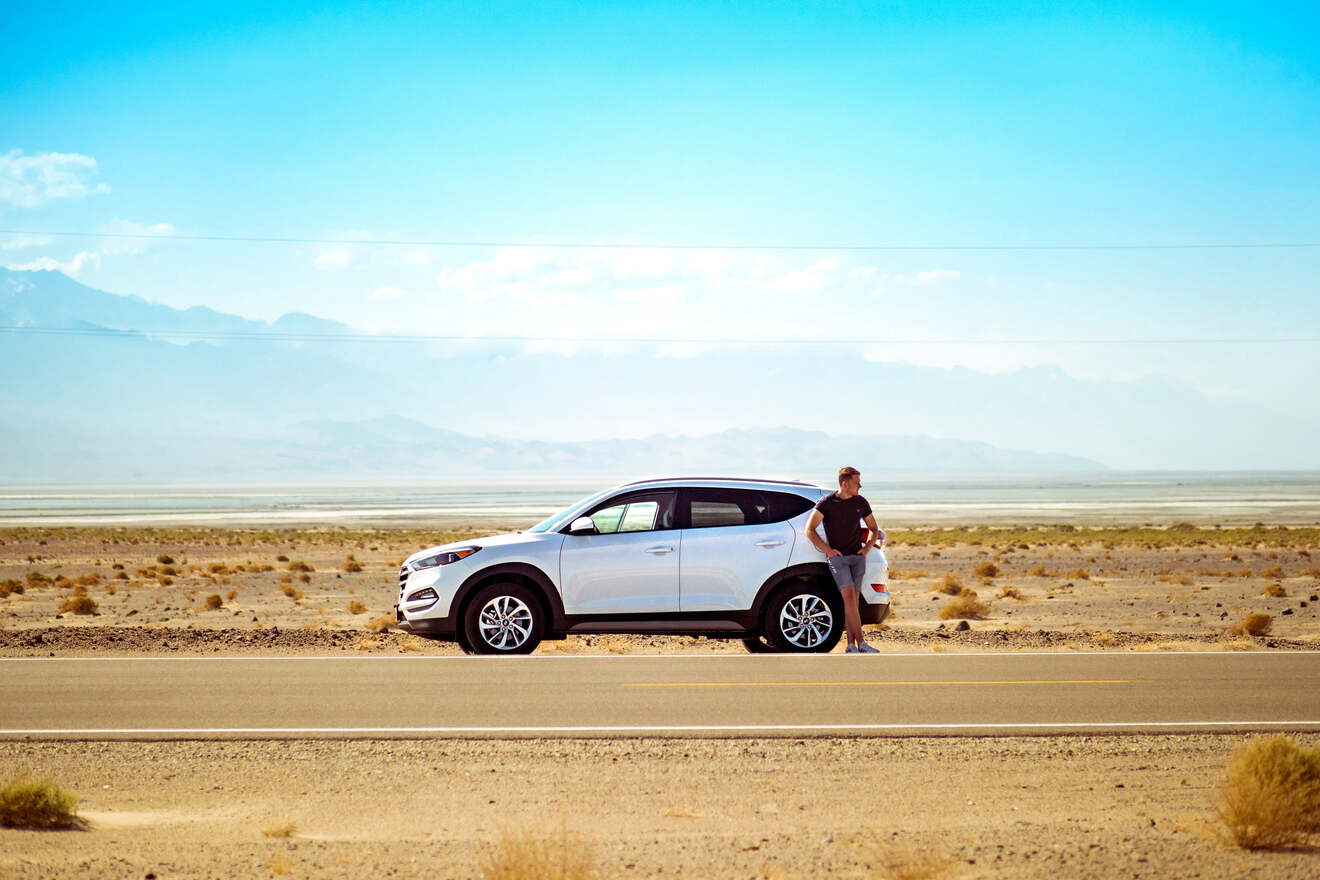
You are practically an expert already, but let’s review again. As we talked about earlier, don’t forget to:
- Make sure to photograph the vehicle and any blemishes before leaving the lot.
- Familiarize yourself with the driving features of the vehicle before leaving the parking lot.
- Don’t put your personal items in any storage or nooks/crannies within the car – it promotes break-ins, and it’s easy to forget your things when you return the car.
11. What to do in case of an accident
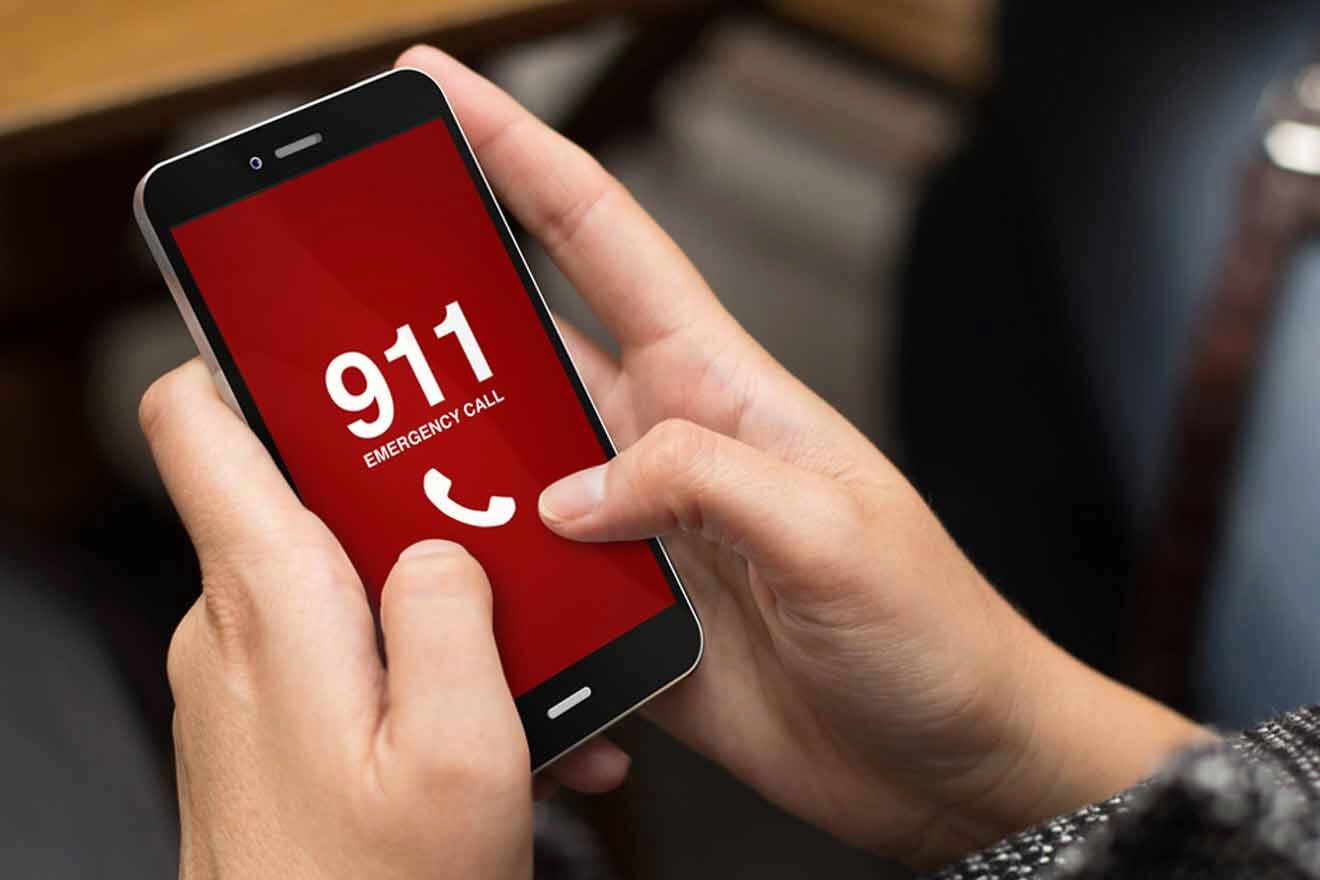
If, unfortunately, an accident occurs – try not to panic.
First and foremost, check yourself, your passengers, and occupants of other vehicles involved for injuries. If anyone is injured, call 911 immediately to request medical assistance.
If it’s safe to do so and the vehicles are drivable, move them to the side of the road or a safe location to prevent further accidents and traffic disruptions. Turn on hazard lights to alert other drivers.
Exchange contact and insurance information with the other parties involved in the accident.
Depending on the severity of the accident, you may need to report it to the local police or California Highway Patrol. They will create an accident report, which might be important for insurance purposes.
Finally, contact the car rental company as soon as possible to report the accident.
In California, you are required to report any accident to the California Department of Motor Vehicles (DMV) if the property damage exceeds US$1,000 or if there are any injuries or fatalities. You can obtain the SR-1 form from the DMV website and submit it as instructed.
Even if you don’t initially notice any injuries, it’s best to seek medical attention promptly. Some injuries may not become apparent until later, and medical documentation can be important for insurance claims.
Inform your own auto insurance company about the accident. If you purchased additional coverage through the rental car company, notify them as well. Follow their guidance on how to proceed with the claim.
| 🚗 Economy car: | US$50 |
| 🚜 4×4 price: | US$100 |
| 🚐 Campervan price: | US$100 |
| 🧍 Driving age: | 21 |
| ⛽ Gas price: | US$1.1 per l. or US$4.5 per gl. |
| 🛣️ Cost of traveling: | medium |
| 👍 Most popular car: | Toyota Corolla or similar |
| 🚙 Top rental company: | Rentalcars |
FAQs about renting a car in California

🗒️ What are the requirements when renting a car in California?
Renting a car in California, you need to be at least 21 years old, have a valid driver’s license, provide a credit card, have insurance, and meet any additional requirements specified by the rental company.
🥳 Do you have to be 25 when renting a car in California?
No, you can typically find a car to rent in California at 21 years old.
🚗 Can tourists rent a car in California?
Yes, but you need to be at least 21 years old and have an international driving permit. Check with the selected car rental company for more specific requirements.
😀 Is it easy to rent a car in California?
Yes, if you plan ahead, it is easy to rent a car in California.
📄 Do you need car insurance to rent a car in California?
You will need liability insurance at the very least, but I recommend going for full insurance coverage just in case!
⛐ What is the cheapest city to rent a car in California?
Right now, the cheapest city to rent a car in the Sunshine State is Santa Ana!
Conclusion

Renting a car in California is a breeze if you do the prep work ahead of time! Whether you rent cars often or have never rented a car before, or you have rented many, I hope this helps you feel confident in the process!
Keep the local regulations in mind, drive safely, plan ahead, and have THE BEST time!
When you return from your trip, I’d love to hear what stops were your favorite and how your experience renting a car went – please drop me a line below and let me know. 😁
Love & aloha,
Hayden G.
Pin it for later!

Pin it for later!

[ad_2]
Source link
